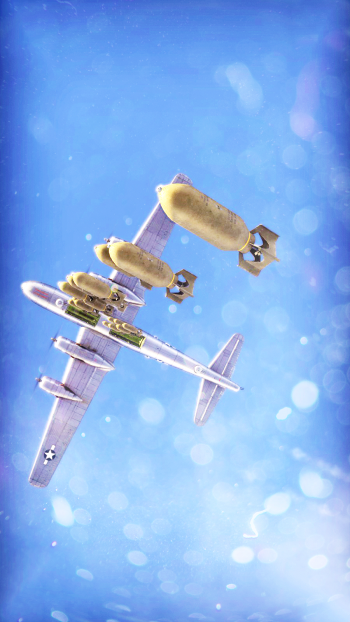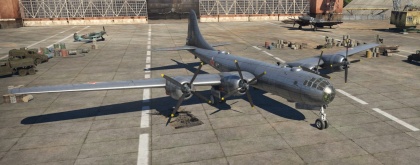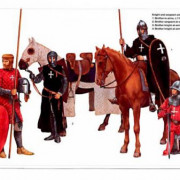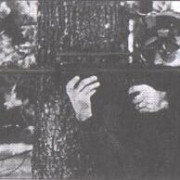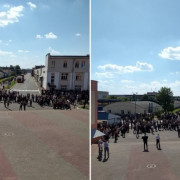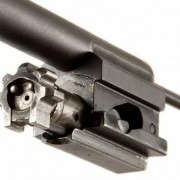О внесении изменений в положение о составе разделов проектной документации и требованиях к их содержанию
Содержание:
General info
Flight Performance
Describe how the aircraft behaves in the air. Speed, manoeuvrability, acceleration and allowable loads — these are the most important characteristics of the vehicle.
| Characteristics | |||||||
|---|---|---|---|---|---|---|---|
| Stock | |||||||
| Max Speed(km/h at 4,000 m) | Max altitude(meters) | Turn time(seconds) | Rate of climb(meters/second) | Take-off run(meters) | |||
| AB | RB | AB | RB | AB | RB | ||
| 365 | 357 | 7,000 | 33.7 | 34.8 | 2.3 | 3.4 | 513 |
| Upgraded | |||||||
| Max Speed(km/h at 4,000 m) | Max altitude (meters) | Turn time (seconds) | Rate of climb(meters/second) | Take-off run (meters) | |||
| AB | RB | AB | RB | AB | RB | ||
| ? | ? | 7,000 | ??.? | ??.? | ?.? | ?.? | 513 |
Details
| Features | ||||
|---|---|---|---|---|
| Combat flap | Take-off flap | Landing flap | Air brakes | Arrestor gear |
| ✓ | ✓ | ✓ | ✓ | X |
| Limits | ||||
|---|---|---|---|---|
| Wing-break speed(km/h) | Gear limit(km/h) | Combat flap (km/h) | Max Static G | |
| + | — | |||
| 680 | 800 | 880 | ~10 | ~4 |
| Optimal velocities | |||
|---|---|---|---|
| Ailerons(km/h) | Rudder(km/h) | Elevators(km/h) | Radiator(km/h) |
| < 270 | < 270 | < 350 | > 250 |
| Compressor (RB/SB) | ||
|---|---|---|
| Setting 1 | ||
| Optimal altitude | 100% Engine power | WEP Engine power |
| 4,000 m | 1,142 hp | 1,284 hp |
- 4 mm Steel plating cockpit tub
- 4 mm Steel plating engine base
- 8 mm Steel plate behind pilot’s seat
- 8 mm Steel plate headrest
- 50 mm Bulletproof glass
Боевое применение
Тимур Фрунзе сбивает Ju-87
Первой войной для Ju 87 Stuka стала Гражданская война в Испании. В 1936—1937 годах в Испании испытывался прототип Ju 87. В 1938 году в страну перебросили три Ju 87 A. Они вошли в состав легиона «Кондор». В реальных боевых условиях проходила финальная обкатка машины и новой тактики применения пикирующих бомбардировщиков. В конце 1938 года лётчики «Кондора» пересели на Ju 87 B.
Stuka использовалась в авангарде немецкого вторжения в Польшу 1 сентября 1939 года, являясь ключевым элементом немецкого блицкрига. На Ju 87 была одержана первая воздушная победа стран оси во время Второй мировой войны — 1 сентября 1939 года пилот люфтваффе лейтенант Ф. Нойберт сбил польский истребитель PZL P.11, пилотируемый капитаном Мечиславом Медвецким. После этого Ju 87 успешно применялся во время вторжения в Норвегию, Голландию и Францию.
Несмотря на прочность, точность и высокую эффективность, «Штука» обладала низкой скоростью и недостаточной манёвренностью. Слабое оборонительное вооружение делало её лёгкой добычей вражеских истребителей. Во время Битвы за Британию немцы осознали, что для успешного использования «Штук» предварительно должно быть достигнуто превосходство в воздухе. Из-за слишком больших потерь применение этих самолётов в битве за Британию было приостановлено.
После Битвы за Британию Ju 87 мало использовались в западной Европе, но оставались достаточно эффективны на юге, где истребители союзников имели плохое снабжение, особенно в Битве за Крит и Мальту. В средиземноморье самолёт успешно использовался против кораблей. Ju 87 также использовался в югославской операции и греческой операции. Кроме того бомбардировщики Ju 87 поддерживали танковые удары африканского корпуса в северной Африке.
Ярким примером большой уязвимости Ju 87 для вражеских истребителей является случай, когда 5 декабря 1941 года над Ливией австралийский ас Клайв Колдуэл (Clive Caldwell) сбил пять Ju 87 в течение нескольких минут на своём P-40 «Tomahawk».
В больших количествах «Штуки» применялись на восточном фронте, но с ростом мощи советских ВВС подразделения, оснащённые этим самолётом, стали нести тяжёлые потери на завершающих стадиях войны. Так, старший лейтенант Горовец в одном бою сбил девять бомбардировщиков.
В последние месяцы войны Ju 87 был заменён на штурмовые варианты Fw-190A.
Процедура пикирования
Junkers Ju 87 G-2 в музее RAF в Хэндоне
Находясь на 4600 метрах, пилот отыскивает цель бомбометания через наблюдательное окно в полу кабины. После выпуска аэродинамических тормозов и убавления газа он переворачивал самолёт на 180 градусов и переходил в пикирование под углом 60—90 градусов. Для контроля угла пикирования относительно горизонта на остеклении фонаря кабины была нанесена градусная сетка.
Когда самолёт приближался к земле, загоралась лампочка на контактном альтиметре (обычно, на высоте 450 метров). Пилот сбрасывал бомбы нажатием кнопки на ручке управления, тут же включался механизм автоматического выхода из пикирования. Захват, находившийся под фюзеляжем, отводил бомбу от воздушного винта, и самолёт начинал выравниваться с перегрузкой до 6 g.
Когда нос «Штуки» оказывался выше горизонта, воздушные тормоза убирались, дроссель открывался и шаг винта устанавливался на набор высоты. Пилот брал управление и возвращался к нормальному полёту. Оставшиеся бомбы под консолями крыла могли быть использованы на другие цели.[источник не указан 2311 дней]
Итальянские пилоты при атаке английских кораблей на Средиземном море выработали другой метод: пикирование проводилось под умеренными углами — 40-50 градусов — но без использования воздушных тормозов, вследствие чего скорость постоянно росла, что затрудняло ведение зенитного огня.
Ju-87 в Польской кампании
 Перед
Перед
началом второй мировой войны летом 1939 г. на вооружении 9 авиагрупп находилось
348 Ju87. 300 были полностью боеготовы. Все самолеты уже только модификации В-1.
Более старые
Ju-87А передали в учебные подразделения.
1 сентября 1939 года в 4 часа 34
минуты обер-лейтенант Бруно Диллей из 3-го отряда 1-й эскадры пикирующих
бомбардировщиков нажал кнопку бомбосбрасывателя, и первые бомбы упали на
польском берегу Вислы. Началась вторая мировая…
«Восемьдесят седьмые» действовали в тылу противника, уничтожая коммуникации
и военные объекты. Но вскоре, в результате полной безнаказанности, «штуки»
начали «охотиться» даже за второстепенными целями, используя свои крыльевые
пулеметы.8 сентября они были привлечены к выполнению стратегической
задачи – около 140
Ju-87 совершили массированный налет на Варшаву. Интересно, что
первую воздушную победу во второй мировой войне также одержал экипаж
Ju-87. Стрелок Франк Нойберт сбил из турельного пулемета
польский истребитель PZL P.11.C.Польская авиация в первые же дни войны
была полностью подавлена, и
Ju-87 действовали довольно нагло. Их потери оказались
незначительными – 30 машин. Из них только 11 были сбиты истребителями.
После Польши немцы стали готовиться и к большой войне на Западе. Это,
естественно, не могло не отразиться и на программе усовершенствования
пикирующих бомбардировщиков. Ведь если в Польше
Ju-87 . могли наносить удары по любому району, то их дальности
для действия против Англии и Франции уже не хватало. Пришлось создавать
новый вариант самолета
Ju-87R-1, оснащенный двумя 300-литровыми подвесными топливными
баками, что увеличило дальность полета с 800 до 1400 км (правда, бомбы под
крыло уже не вешались).Летом 1940 г. на вооружение начал поступать
самолет с более мощным 1200-сильным двигателем Jurno 211Da, получившим
обозначение
Ju-87B-2. Ему соответствовал и дальний пикировщик R-2.
Однако война против Англии и Франции выявила серьезный недостаток
Ju-87 – его уязвимость от истребителей противника. Уже в боях
под Дюнкерком, когда англичане временно захватили превосходство в воздухе,
Юнкерсы, не имевшие броневой защиты и хорошего оборонительного вооружения,
понесли ощутимые потери.
В немалой степени этому способствовали английские Спитфайры и Харрикейны,
вооруженные восемью пулеметами каждый, и которые были гораздо более
эффективны, чем польские истребители, с двумя-четырьмя пулеметами.Еще
более серьезные потери немецкие пикировщики понесли в ходе битвы за Англию.
Уже через 6 дней после начала этой воздушной операции командование люфтваффе
решило прекратить использование
Ju-87 на данном направлении. В противном случае это могло бы
привести к полному истреблению всех соединений немецких пикировщиков.
Штуки были переброшены на Балканы, в Италию и Северную Африку. Здесь, в
условиях слабого противодействия вражеской авиации они вновь доказали свою
высокую эффективность, в том числе и при ударах по кораблям противника.
History
Describe the history of the creation and combat usage of the aircraft in more detail than in the introduction. If the historical reference turns out to be too long, take it to a separate article, taking a link to the article about the vehicle and adding a block «/ History» (example: https://wiki.warthunder.com/(Vehicle-name)/History) and add a link to it here using the template. Be sure to reference text and sources by using , as well as adding them at the end of the article with . This section may also include the vehicle’s dev blog entry (if applicable) and the in-game encyclopedia description (under , also if applicable).
In-game description
The Junkers Ju 87 Stuka was a single-engine dive bomber and attack aircraft of the WWII era. The most famous Stuka pilot of the war was Hans-Ulrich Rudel, the most highly decorated Luftwaffe pilot in history. Despite its slow speed and mediocre aerodynamics (the landing gear was fixed), the Stuka was one of the most effective Luftwaffe aircraft early in the war due to its pin-point accuracy in a dive. The Ju 87 remains one of the most recognizable symbols of the Blitzkrieg.
The Stuka was an innovative design for its time, including such elements as automatic pull-up dive brakes which could recover the plane from a dive even if the pilot blacked out, and the infamous Jericho Trumpet sirens, activated by the airstream during the dive, which produced a demoralizing high-pitched whine. The Ju 87 B could carry up to 1,000 kg of bombs, but only without a rear gunner, and at a greatly reduced range.
Description
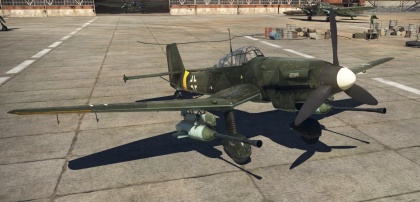
The Ju 87 G-1 is a rank II German attacker
with a battle rating of 3.0 (AB/SB) and 2.3 (RB). It has been in the game since the start of the Open Beta Test prior to Update 1.27.
The differences between the G-1 and G-2 variants are the wing types utilized. The G-1 employs the same wing type as the Ju 87 D-3 while the G-2 instead utilizes the same wing area as the Ju 87 D-5 variant.
Regarded highly by famed German ace Hans-Ulrich Rudel, the Ju 87 G is one of the deadliest ground attack aircraft in War Thunder. Building upon the classic «Stuka» design, German engineers fitted a pair of Bordkanone 37mm cannons to early Ju 87 D models, creating a beast. Instead of bombs, this aircraft utilizes its twin synchronized 37 mm anti-tank cannons to demolish any armour it faces. Able to fire the German 37mm high-velocity armour piercing round, the Ju 87 G is more than a force to be reckoned with. Unfortunately, each cannon only holds 12 rounds of ammunition each, for a total of 12 individual shots. This puts a cap on how much total damage the Ju 87 G can do.
The Ju 87 G’s armament, a pair of Bordkanone BK 3,7 cannons, are deadly in all regards. They are able to destroy most ground units and aircraft with a single press of the trigger. Equip air targets or armoured targets belt depending on what your target is. The armoured targets belt is fairly ineffective against aircraft and the air targets belt does next to nothing to armoured ground units.
The Ju 87 G-1 differs from its later counterpart, the Ju 87 G-2 in that it utilizes the earlier D models such as the Ju 87 D-3. The G-2 model uses the later Ju 87D-5 model.
By early 1943 the Luftwaffe, or rather the whole German army at the Eastern Front, faced a critical problem fighting Soviet armoured forces. The equipment intended to stop the «Russian steam roller» included a special anti-tank version of the Stuka that appeared in late 1942.
The first anti-tank variant, the Ju 87G-1, was based on the Ju 87D-3 variant. The main distinction of the G-1 was that it had two containers fitted under the wings to house 37 mm Bordkanone BK 3.7 cannons (an airborne version of the Rheinmetall Flak 18 anti-aircraft gun), with 6 rounds each. The shells were kept in magazines protruding beyond the sides of the container. The long-barrelled anti-aircraft gun brought the tungsten-core sabots to an initial velocity of 1,170 m/s, allowing the gun to be fired at a distance of about 800 m. This was quite sufficient to pierce the rear or upper plating of the T-34 tank.
When D-3s were converted to G-1s, the wing-mounted machine guns and the bomb racks were removed. The aircraft’s armour was weakened. Unlike those on the standard Ju 87D-3, the radio operator/gunner’s station, the fuel tanks in the centre wing section, and the radiator were not armoured on the anti-aircraft Stuka.
Tests showed that the Ju 87G-1’s speed was reduced by 30-40 km/h and its manoeuvrability was noticeably impaired, which, in addition to its weakened armour and poor defensive armament, made the machine almost a perfect target for fighter attacks. Due to the aircraft’s poor longitudinal stability, it was difficult to aim. The BK 3.7 cannon had quite a low rate of fire and low reliability as far as its automatic equipment was concerned. In fact, for a Ju 87G, success on the battlefield was possible only if it was flown by an experienced pilot and only if enemy anti-aircraft gunners and fighters provided little opposition.
However, if operated by an experienced gunner, the Gustav was able to hit the tank’s most vulnerable parts, such as its engines, fuel tanks, and ammunition stowage bins. This was the reason why the Ju 87G-1’s tests were considered successful, and the military came to the conclusion that the prospect of its use in combat was reasonable, since the situation was hopeless otherwise, as there were no other aircraft anywhere near suitable for fighting tanks.
Production Ju 87D-3s were converted to G-1s on site by the troops. For this conversion, the cannon-housing containers could be easily removed and replaced with standard bomb racks. None of the aircraft had dive flaps, but the brackets to fit them remained. A total of about 40 machines were converted in this fashion.
Description
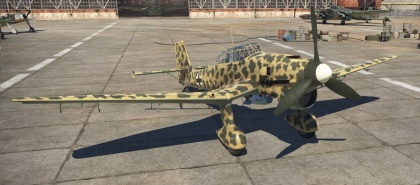
The Ju 87 R-2 is a rank I German bomber
with a battle rating of 1.7 (AB/RB/SB). It has been in the game since the start of the Open Beta Test prior to Update 1.27.
The main use of this plane is precision strikes on hard targets such as tanks and pillboxes, as well as providing ground support in ground battles. This is largely due to its spectacular dive-bombing accuracy and powerful payload. To preform an effective dive with this plane, at an altitude of at least 1,400 m, place your target at the bend in your wings, roll your upside-down and dive at an angle of 60-90 degrees, aiming your cross-hairs at or slightly in front of the target (leading with their speed). Drop throttle to 0% and deploy airbrakes (h key by default); you should keep a steady speed of 400 km/h. Release your bomb at 300 m from the target and you should score a direct, or near hit.
Usage in battles
The Stuka has always been famous for its ground strike capabilities. The Stuka G-1 is no exception; with twin 37mm Bordkanone, destructive power is at your command. However, the Stuka G-1 cannot be used to hunt bombers or fighters: you can try, but the results will be disappointing.
(The guns have a convergence range of 700m with vertical targeting on)
In simulator battles, before delving into basic attacking procedure, it is recommended to trim the aircraft before anything else (once after taking off). This is to ensure the ease of aiming the turret gun, as that is your only ‘offensive’ weaponry. (Elevation -10%, Rudder around -1 ~ -2%?)
After taking off and trimming, fly to around 600m above ground and lower throttle to around 80% ~ 90%. Avoid any AAA zones as much as possible, as your plane is no IL-2. Use your slow speed to your advantage to spot any possible ground targets.
Once a potential target is spotted, increase throttle to 95%. It is best that the angle of attack is shallow and maintain a speed 300km/h and above. When climbing after an attack, it is recommended to shallow climb, as it increases the distance between the Stuka and the target, allowing better readjustments and maintaining high energy to turn. Coming in at a shallow angle of attack is important because the AI tanks may bounce shells at high angles, so coming in at a shallow angle of attack reduce the chances of these ricochets from occurring.
When attacking, always have your Stuka fly towards the direction that is in path of the ground target. It is not recommended to ‘chase’ the target as that will bleed energy. Unlike the Hs. 129, the Stuka G-1 does not have forward firing light machine guns to help guide your shots, so it is best to practice a lot in custom battles on tank missions with AI tanks.
For beginners, it is best to make a habit of «one-shot-per-run», as firing multiple times to make a hit are wasteful and risky. Remember, the plane essentially have two anti-tank guns that fires at the same time, meaning firing multiple times will reduce energy and increase risk of stall. So, if a pair of shots miss, control your urge: let go, pull up, WEP, climb, level, build energy, and try again.
The greater threat is not the ground AAs nor the enemy plane: it is the lack of patience. Have composure, memorize the mistakes, and adapt.
If an enemy plane comes towards the area of operation, ignore the enemy. Complete the Stuka’s job as the objective is more important. Try your very best to squeeze in a few more grounded targets with a clear mind, as it will contribute with your Spawn Points and economy. Dealing with the enemy should be done after the objective is completed or the ammunition runs out.
It is understandable that many players want to start flying their desired fighters, but a sloppy job will contributes nothing to your team and yourself. The plane is also rewarding on good runs, so try your best. The plane may be cheap, but repeating the process is very taxing on motivation.
All planes armed with high calibre tank guns requires one virtue to be effective and this plane is no exception to it: patience.
Manual Engine Control
| MEC elements | ||||||
|---|---|---|---|---|---|---|
| Mixer | Pitch | Radiator | Supercharger | Turbocharger | ||
| Oil | Water | Type | ||||
| Controllable | Not controllable | Not controllable | Not controllable | Separate | Not controllable | Not controllable |
Modules
| Tier | Flight performance | Survivability | Weaponry | ||
|---|---|---|---|---|---|
| I | Fuselage Repair | Radiator | Offensive 37 mm | ||
| II | Compressor | Airframe | Turret 7 mm | ||
| III | Wing Repair | Engine | New 37 mm Cannons | ||
| IV | Engine Injection | Cover | New 7 mm MGs (turret) |
Unlocking the 37 mm belts is a must for this aircraft. The default belt is a mix of HE and AP rounds, resulting in only half of the trigger pull hitting what you want. Instead of staggering the rounds one trigger pull is HE one trigger pull is AP, it is mixed. After that, it matters not which way the Stuka pilot researches his or her modules.
Pros and cons
Pros:
- Impressive turn rate at high speeds
- Powerful cannons, light pillboxes and medium, light, and heavy tanks will find that four shells (or two clicks of a mouse) will destroy them
- Good defensive turret
- Armor around the pilot, gunner, and engine
- Able to be used in different roles (attacker, support fighter, etc…)
Cons:
- Lacks any frontal offensive machine guns/cannons whatsoever, making engagement with a fighter difficult
- Very little cannon ammunition
- Very slow
- Vulnerable to damage
- Incredibly slow roll rate, especially at high speeds
- Bad high altitude performance
- Inability to equip bombs or rockets
General info
Flight performance
Describe how the aircraft behaves in the air. Speed, manoeuvrability, acceleration and allowable loads — these are the most important characteristics of the vehicle.
| Characteristics | |||||||
|---|---|---|---|---|---|---|---|
| Stock | |||||||
| Max Speed(km/h at 4,000 m) | Max altitude(meters) | Turn time(seconds) | Rate of climb(meters/second) | Take-off run(meters) | |||
| AB | RB | AB | RB | AB | RB | ||
| 369 | 357 | 7 500 | 32.4 | 33.9 | 1.7 | 1.7 | 513 |
| Upgraded | |||||||
| Max Speed(km/h at 4,000 m) | Max altitude(meters) | Turn time(seconds) | Rate of climb(meters/second) | Take-off run(meters) | |||
| AB | RB | AB | RB | AB | RB | ||
| 402 | 385 | 7 500 | 29.7 | 31.0 | 7.3 | 4.2 | 513 |
Details
| Features | ||||
|---|---|---|---|---|
| Combat flaps | Take-off flaps | Landing flaps | Air brakes | Arrestor gear |
| X | ✓ | ✓ | ✓ | X |
| Limits | ||||
|---|---|---|---|---|
| Wing-break speed(km/h) | Gear limit(km/h) | Combat flaps(km/h) | Max Static G | |
| + | — | |||
| 500 | ~12 | ~4 |
| Optimal velocities | |||
|---|---|---|---|
| Ailerons(km/h) | Rudder(km/h) | Elevators(km/h) | Radiator(km/h) |
| < 270 | < 270 | < 350 | > 325 |
| Compressor (RB/SB) | ||
|---|---|---|
| Setting 1 | ||
| Optimal altitude | 100% Engine power | WEP Engine power |
| 4,000 m | 1,180 hp | 1,390 hp |
- 4-8 mm of armour in the fuselage.
- 7mm Steel plate behind pilot.
General info
Flight Performance
Describe how the aircraft behaves in the air. Speed, manoeuvrability, acceleration and allowable loads — these are the most important characteristics of the vehicle.
| Characteristics | |||||||
|---|---|---|---|---|---|---|---|
| Stock | |||||||
| Max Speed(km/h at 4,100 m) | Max altitude(meters) | Turn time(seconds) | Rate of climb(meters/second) | Take-off run(meters) | |||
| AB | RB | AB | RB | AB | RB | ||
| 367 | 356 | 7 000 | 28.1 | 29.2 | 2.5 | 2.5 | 434 |
| Upgraded | |||||||
| Max Speed(km/h at 4,100 m) | Max altitude(meters) | Turn time(seconds) | Rate of climb(meters/second) | Take-off run(meters) | |||
| AB | RB | AB | RB | AB | RB | ||
| 403 | 383 | 7 000 | 25.9 | 27.0 | 9.9 | 5.6 | 434 |
Details
| Features | ||||
|---|---|---|---|---|
| Combat flaps | Take-off flaps | Landing flaps | Air brakes | Arrestor gear |
| X | ✓ | ✓ | ✓ | X |
| Limits | ||||
|---|---|---|---|---|
| Wing-break speed(km/h) | Gear limit(km/h) | Combat flaps(km/h) | Max Static G | |
| + | — | |||
| 520 | ~18 | ~7 |
| Optimal velocities | |||
|---|---|---|---|
| Ailerons(km/h) | Rudder(km/h) | Elevators(km/h) | Radiator(km/h) |
| < 250 | < 350 | < 350 | > 280 |
| Compressor (RB/SB) | ||
|---|---|---|
| Setting 1 | ||
| Optimal altitude | 100% Engine power | WEP Engine power |
| 3,700 m | 930 hp | 1,199 hp |
- 5 mm Steel plate between pilot/gunner
- 8 mm Steel plate between pilot/gunner.
Описание конструкции
Пикирующий бомбардировщик Ju-87 – это цельнометаллический одномоторный низкоплан с неубирающимся шасси. Фюзеляж Ju-87 типа полумонокок овального сечения. Экипаж самолета состоял из двух человек: пилота и стрелка-радиста.
Кабины пилотов находились в центральной части самолета, они были закрыты общим фонарем, который мог быть сброшен аварийно. В задней части кабины находилась пулеметная установка (MG 15). В фюзеляже пикировщика находился застекленный люк, сверху закрытый металлической крышкой. Через него пилот мог выбирать цели и точно определять момент начала пикирования. Между кабинами пилота и стрелка-радиста располагалась коротковолновая радиостанция.
Ju-87 имел трапециевидное крыло с закругленными краями, состоящее из центроплана и двух консолей. Его силовой каркас состоял из нервюр, лонжеронов и работающей обшивки. Крыло Ju-87 было выполнено по схеме «обратная чайка», что позволило уменьшить массу и размеры неубирающегося шасси.
Механизация крыла состояла из щелевых элеронов и закрылков. Под каждой из консолей крыла устанавливался аэродинамический тормоз, который использовался для уменьшения скорости пикирования самолета. Он представлял собой металлическую пластину со щелью посередине. Управление тормозными щитками происходило с помощью автомата пикирования Ahfanggerat. Управление тормозными щитками и закрылками осуществлялось с помощью гидравлической системы.
В центроплане крыла также располагались весьма объемные топливные баки.
Пикировщик Ju-87 был оснащен двигателем водяного охлаждения Jumo 211, который в зависимости от модификации машины имел разную мощность. Самолет имел деревянный трехлопастный винт с изменяемым шагом (на поздних модификациях установили металлический). Автомат управлением шагом винта и управления мотором были объединены в одну систему с автоматом пикирования, который также управлял подачей топлива, открытием и закрытием створок радиаторов. Автомат пикирования стал важнейшим новшеством Ju-87, во многом обеспечившей ее эффективность. Он значительно упрощал работу пилотов, позволяя полностью сосредоточиться на бомбометании. Позже в схему был включен высокомер, поэтому «штука» выводилась из пикирования, независимо от того, была ли сброшена бомба.
Ю-87 имел одинарное цельнометаллическое хвостовое оперение с подкостным стабилизатором. Каждый руль высоты имел по два триммера, которые соединялись с автоматом пикирования. Регулировка стабилизаторов была возможна только вместе с закрылками.
Бомбардировщик имел трехопорное неубирающееся шасси с масляно-пневматической амортизацией. Его конструкция позволяла пикировщику использовать аэродромы с грунтовым покрытием, находящиеся рядом с линией фронта. На Ju-87 можно было установить лыжи.
Топливная система состояла из двух протектированных баков, расположенных в центроплане крыла, емкостью по 250 литров.
Радиатор водяного охлаждения располагался в носовой части машины, в туннеле под двигателем.
Пикирующий бомбардировщик Ju-87 был вооружен тремя 7,92-мм пулеметами: два неподвижных MG-17 размещались в консолях крыла, еще один MG-17 устанавливался в кабине стрелка и использовался для защиты задней полусферы и обстрела земли во время выхода из пикирования.
Бомбовая нагрузка пикировщика составляла 1 тыс. кг, машина имела три точки подвески: под фюзеляжем и под консолями крыла. Во время пикирования специальная вилка Н-образной формы отводила центральную бомбу от винта самолета.
Состав вооружения Ju-87 несколько изменялся у разных модификаций. Так, например, штурмовик Ю-87 (модификация Ju-87G) имел на вооружении две 37-мм пушки.


